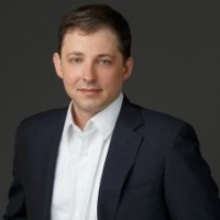MAE Seminar: Direct-write Helium Ion Lithography of High-transition Temperature Superconducting Electronics

McDonnell Douglas Engineering Auditorium (MDEA)
Shane Cybart
Assistant Professor
Department of Mechanical Engineering
Materials Science and Engineering Program
University of California Riverside
Abstract: The 1987 discovery of high-TC superconductivity in ceramic materials at temperatures around 90K set off a frenzy of research in the development of high-TC electronics, motivated by the prospects of electronics operating in liquid nitrogen at 77K opposed to 4K liquid helium. Unfortunately, researchers soon discovered that these new materials were much more difficult to process than conventional metal superconductors. High-TC materials are very anisotropic and the superconducting properties vary along the different crystallographic directions, which complicates manufacturing of the basic building blocks of superconducting electronics: Josephson junctions. Furthermore, the length scale of superconductivity in high-TC ceramics is very short compared to low-TC metals. Despite these challenges many high-TC Josephson junction manufacturing techniques have emerged over the last three decades but none is able to generate large numbers of junctions with predictable characteristics necessary for large-scale circuits. Recently, my group has demonstrated a new scalable nanomanufacturing method of high‑TC electronics using the finely focused beam from a helium ion microscope, which has the potential to deliver large numbers of high-quality circuits while at the same time reducing their costs by orders of magnitude. In this seminar, I will present some of the novel characteristics and applications of this new remarkable technology, including biomedical sensors for neural imaging and advanced wide-bandwidth electrically small antennas.
Bio: Professor Shane Cybart is the principal investigator of the Oxide Nano Electronics Laboratory at UC Riverside. He obtained a PhD in materials science from UC San Diego in 2005 studying high-transition-temperature Josephson devices. He continued his work in superconducting electronics as a postdoctoral researcher at UC Berkeley 2006-2009. More recently, he served as a project scientist at UC Berkeley and the Lawrence Berkeley Laboratory working on multiferroic and magnetic oxides. From 2013-2016, he led a group at UC San Diego developing oxide electronic devices for a diverse range of applications. In June 2016 he joined the Department of Mechanical Engineering and Materials Science and Engineering Program at University of California Riverside. His group studies the basic science and applications of Josephson devices.
Share
Upcoming Events
-
MSE 298 Seminar: Translational Neuroelectronics
-
CBE Seminar: Water Structure and Computational Design of Water-mediated Solute-surface Interactions
-
CALIT2 Distinguished Lecture: Strategic Directions for Electronics Packaging
-
MSE 298 Seminar: Science-Based Advanced Manufacturing of Metals and Alloys
-
EECS Seminar: Transient Electronics – From Bioelectronic Medicines to Environmental Monitors
